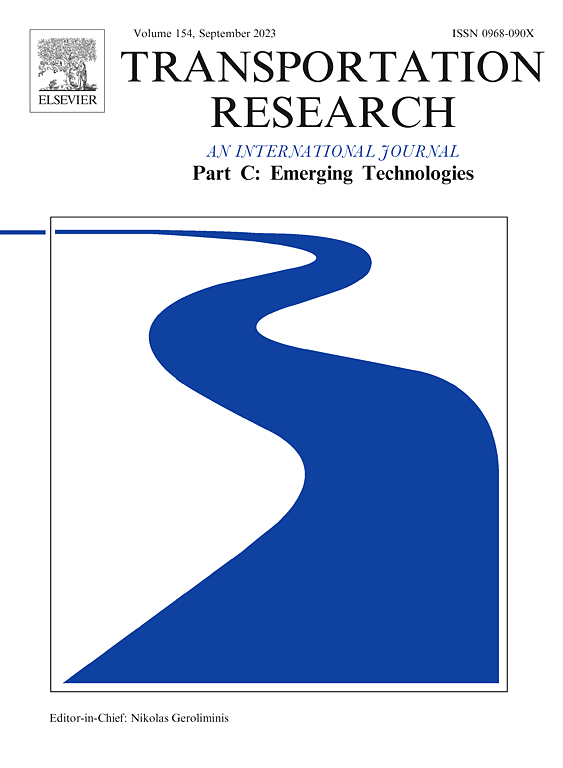Freeway real-time crash prediction using floating car data
IF 7.6
1区 工程技术
Q1 TRANSPORTATION SCIENCE & TECHNOLOGY
Transportation Research Part C-Emerging Technologies
Pub Date : 2025-02-01
DOI:10.1016/j.trc.2025.105009
引用次数: 0
Abstract
The likelihood of traffic crashes is significantly affected by the short-term turbulence of traffic flow, a common phenomenon on freeways due to high traffic volume and speed. Real-time traffic safety models have the potential to capture this variation in traffic flow to predict crashes reliably, but data collection methods used in previous studies cannot effectively reflect the necessary spatio-temporal traffic dynamics. Floating car data (FCD), utilizing the kinematics information collected by multiple single vehicles, provides a way to acquire this information on traffic flow before crashes occur. This study aims to develop a real-time crash prediction model based on FCD from the Jiading-Jinshan and Outer Ring Freeways in Shanghai, China. A map matching technique is employed for freeway FCD without heading direction. Both dynamic and static features are constructed, and the variations of dynamic features before the crash are analyzed. The non-parameter tests (Mann–Whitney U and Fligner–Killeen tests) are applied to identify the heterogeneity between crash and non-crash cases. The bidirectional long short-term memory network (LSTM) with a multi-head attention mechanism combined with dynamic and static features is built and showed the best performance. Different histogram-based threshold selection methods are compared. The trained model is applied to all the data for validation, and the matched case-control technique can well predict crashes in this study. The main findings are: (1) the multi-head attention and bidirectional mechanisms can significantly improve model performance, while the static features combination is not as effective; (2) volume is the most important dynamic feature, then is the speed standard deviation followed by the average speed. This model can be applied in providing alerts to drivers and evaluating real-time intervention measures.
求助全文
约1分钟内获得全文
求助全文
来源期刊
CiteScore
15.80
自引率
12.00%
发文量
332
审稿时长
64 days
期刊介绍:
Transportation Research: Part C (TR_C) is dedicated to showcasing high-quality, scholarly research that delves into the development, applications, and implications of transportation systems and emerging technologies. Our focus lies not solely on individual technologies, but rather on their broader implications for the planning, design, operation, control, maintenance, and rehabilitation of transportation systems, services, and components. In essence, the intellectual core of the journal revolves around the transportation aspect rather than the technology itself. We actively encourage the integration of quantitative methods from diverse fields such as operations research, control systems, complex networks, computer science, and artificial intelligence. Join us in exploring the intersection of transportation systems and emerging technologies to drive innovation and progress in the field.

 求助内容:
求助内容: 应助结果提醒方式:
应助结果提醒方式:


